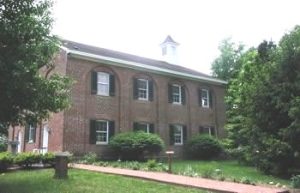
The history of All Saints Parish spans over three centuries, encompassing significant moments that have shaped the community and its place within the wider religious landscape. Established in 1692, the parish had a log church which served as a gathering place for worshipers.
Throughout its early years, the mainstay of the community consisted of tobacco farmers, whose contributions played a vital role in sustaining the church. The construction of the current church structure was completed in 1777, with the funds largely derived from the tobacco industry. It is important to acknowledge that this progress came at the expense of enslaved individuals, who labored in building these structures.
For generations in Protestant Calvert County, All Saints Parish held a religious monopoly as a representative of the Church of England. Sadly, this period also saw the enforcement of racial segregation within the church. Enslaved people, indentured servants, and “free persons of color” were compelled to attend only the White-approved religious services. Balconies were erected within the church, specifically designated for slaves and poor whites. The white-pine paneled galleries stretched the length of the building. The architectural arrangement, with three rows of pews situated at a lower level, prevented seated parishioners from seeing over the top of the gallery, perpetuating a segregated worship experience. These deliberate divisions underscore the struggles and injustices endured by non-whites and economically disadvantaged individuals within the community.
Today, All Saints Parish acknowledges and seeks to reconcile with its complex past, striving for inclusivity, equality, and justice. It is through reflection, education, and the commitment to foster an environment of love and acceptance that the parish endeavors to honor the legacy of those who have come before so that we may build a more inclusive future.
All Saints has been listed in the National Register of Historic Places since 1973 and a historic roadside marker is along MD Route 2 along the parish property.
Additional Resources
National Register nomination form link: https://apps.mht.maryland.gov/Medusa/PDF/NR_PDFs/NR-126.pdf
All Saints Parish website link: https://allsaints1692.org/